#Apache CouchDB Tutorial
Explore tagged Tumblr posts
Text
Unraveling Apache CouchDB: The Ultimate Guide for Database Enthusiasts

In the realm of NoSQL databases, Apache CouchDB stands out as a versatile and scalable option. This Apache CouchDB tutorial aims to demystify its intricacies, making it accessible to both beginners and seasoned developers.
Getting Started with Apache CouchDB
Begin your journey by installing and setting up Apache CouchDB. This straightforward process lays the foundation for efficient database management.
Mastering Basic Operations
Learn the fundamental operations like creating, updating, and deleting documents. Explore how CouchDB's unique approach to document storage enhances flexibility and performance.
Advanced Querying Techniques
Delve deeper into CouchDB's querying capabilities. Uncover methods for complex queries, including MapReduce functions, that enable you to extract precisely the data you need.
Replication and Scalability
Discover how to replicate databases for redundancy and distributed setups. Harness the power of CouchDB's multi-master replication to ensure data integrity and availability.
Optimizing Performance
Fine-tune your CouchDB instance for optimal performance. Explore techniques for indexing, caching, and load balancing to keep your database running smoothly.
With this tutorial, you'll gain the expertise needed to harness the full potential of Apache CouchDB. Whether you're building a small-scale application or a large-scale system, CouchDB's flexibility and scalability will be at your fingertips.
For a more detailed guide on Apache CouchDB, visit Tutorial and Example.
Remember, practice makes perfect. Dive in, experiment, and unleash the power of Apache CouchDB!
0 notes
Text

Unlock the power of Apache CouchDB with our in-depth tutorial. From setup to advanced queries, master database management with step-by-step guidance and practical examples. Start learning today!
0 notes
Text
How to Setup Cloudant Backend For ACRA (Application Crash Reports for Android)
How to Setup Cloudant Backend For ACRA (Application Crash Reports for Android)
(No Ratings Yet) Loading...
Tung Dao Xuan, [email protected], is the author of this article and he contributes to RobustTechHouse Blog
What is ACRA?
ACRA stands for Application Crash Reports for Android. This library helps your software send crash reports to a backend of your choice.
The Acralyzer is an open source backend for ACRA reports that is really simple to install. The only server-side requirement is Apache CouchDB. You can host it on your own server or use the free hosting services of Cloudant.
Setup Cloudant backend
Step 1:
Sign up an account with Cloudant
Step 2:
Open Replication tab and fill in the fields as shown below:
Source database (Remote Database tab): http://get.acralyzer.com/distrib-acra-storage
Target database (New Database tab) : acra-<name_of_your_database>
Then, click the Replicate button.
Step 3:
Continue to replicate another:
Source database (Remote Database tab): http://get.acralyzer.com/distrib-acralyzer
Target database (New Database tab) : acralyzer
Then, click the Replicate button.
After that, open the Databases tab, you will see the 2 databases you have replicated.
Step 4:
Open acra-<name_of_your_database> database (in this tutorial is: acra-demo), select the Permissions tab.
Click the Generate API key button and note down Key and Password. You will need them when you integrate ACRA with your Android software.
Remove the Reader permission and add the Writer permission for the key you have just generated.
To confirm your backend is created successfully, go to https://<your_cloudant_account>.cloudant.com/acralyzer/_design/acralyzer/index.html and you will see the result as below figure.
Setup Android code with ACRA.
Step 1:
In build.gradle file, add ACRA library:
compile ‘ch.acra:acra:4.6.2’
Step 2:
In your AndroidManifest.xml file, declare internet permission.
<uses-permission android:name=”android.permission.INTERNET”>
Step 3:
In your class that extends from Application class, update ACRA configuration like this
@ReportsCrashes( formUri = "https://<your_cloudant_account>.cloudant.com/acra-<name_of_your_database>/_design/acra-storage/_update/report", reportType = HttpSender.Type.JSON, httpMethod = HttpSender.Method.POST, formUriBasicAuthLogin = "<your_key_that_is_created_before>", formUriBasicAuthPassword = "<your_password_that_is_created_before >", customReportContent = { ReportField.APP_VERSION_CODE, ReportField.APP_VERSION_NAME, ReportField.ANDROID_VERSION, ReportField.PACKAGE_NAME, ReportField.REPORT_ID, ReportField.BUILD, ReportField.STACK_TRACE, ReportField.DISPLAY, ReportField.TOTAL_MEM_SIZE, ReportField.AVAILABLE_MEM_SIZE }, mode = ReportingInteractionMode.SILENT ) public class <YourClassName> extends Application { @Override public final void onCreate() { super.onCreate(); ACRA.init(this); }
Conclusion
You are done! Run your software and see your crash reports to find out where the problems in your software and fix it.
You can configure report content and use other features. To find out more, check out the links below:
https://github.com/ACRA/acra/wiki/AdvancedUsage
https://github.com/ACRA/acra/wiki/ReportContent
https://github.com/ACRA
http://www.acra.ch/
RobustTechHouse is a leading tech company for mobile app development and ECommerce web design and development. If you are interested to engage RobustTechHouse for your projects, you can contact us here. If you like our articles, you can follow us on our Facebook.
How to Setup Cloudant Backend For ACRA (Application Crash Reports for Android) was originally published on RobustTechHouse - Mobile App Development Singapore
0 notes
Text
How important is coding?
Coding is and has always been the most futuristic job. It will remain relevant until the end of technology because apparently without coding you cannot design a program or give a new shape to A.I (Artificial Intelligence).

Coding, also known as programming, basically implies writing codes for computer programming or building web pages and applications. HTML/CSS, PHP, Javascript, C+, and Dot Net are few of the examples of most adopted programming languages. Whatever we see inside a computer, on the internet, or machines with a graphical interface such as a smartphone is basically made from coding.
Coding as a Tech Job
8 out of 25 jobs posted are Tech Jobs. With the rising demand of developers, coding has become an essential skill in almost every resume.
The essence and importance of programming cannot be denied in today’s world where almost everything built by human runs on arrays of codes.
Large conglomerates such as Apple, Google, and Microsoft who house thousands of employees demand expert programmers. Although an exceptional case, a programmer made as much as $3million a year in salary and stock at Google. This makes coding the most sought after job in the world.
The most sought after Tech jobs in the world are as follows;
· Information Technology (IT) worker
· Data Analysts
· Artists and designers
· Engineers
· Scientists
According to the U.S. Bureau of Labor Statistics, in 2012, the average salary for an application software developer was $93,000, with only 10 percent of such developers making more than $139,000 in salary.
10x Engineer
10x Engineer implies that the computer engineer can code 10 times faster any average coder or he can do 10 times more than any coder. They are the highest-paid tech workers in the world. Although a popular concept, there are likely only 1% 10x Engineers in the world.
Along with the coding, testing the application, debugging, and designing (UI/X) are equally important job descriptions. However, the demand for a coder exceeds any other tech jobs.
Importance of Coding
Developing a program through coding involves a series of steps where a programmer will define a problem, plans a solution, code, test the code, and finally document the program. The importance of coding can be simplified through the following points.
Systems Knowledge
Coding helps a programmer to gain a full understanding of the how and why of computer systems, including system limitations. They can work around those limitations to fully maximize the use of the equipment and its accessories.
Creativity Platform
Coding has always been a platform to showcase creativity, especially for entertainment. With the help of coding, the game develops can create new video games, graphics, and animations to showcase new business ideas or to resolve a particular problem.
Interactive Education
Coding helps in interactive education by offering interactive web applications. Used on online learning platforms, these applications have allowed distance-learning programs to take off. Today, almost all major learning institutions have some form of online learning implementation, thanks to computer programming such as cloud computing.
Defining the Future
Every major futuristic accomplishment has been done by programming. Future-technology such as voice-recognition, artificial intelligence, and touch-simulation in devices keep evolving and getting better with the advent of new coding. The rise in online shopping gave way to eCommerce and easy online payment systems. A.I. in smartphone and websites can offer suggestions, advice, or solutions at ago.
Machine Language
Since computers work with numbers, programming allows a person to represent machine-language in a human-readable format. This reduces the chances of introducing errors and wasted time in debugging and correcting mistakes
Different Programming Languages
A programming language is known as a vocabulary with a set of grammatical rules instructing a computer or computing device to perform specific tasks.
Although the term programming language usually referred to high-level languages, such as BASIC, C, C++, COBOL, Java, FORTRAN, Ada, and Pascal, today it is used for almost every set of a programming languages such as PHP, Javascript, Python, Dot Net, and C+.
Some of the most implemented programming languages are as follows;
PHP
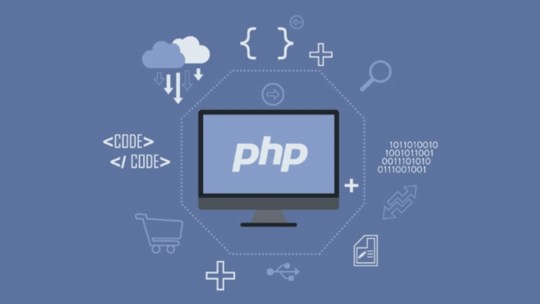
More than 80% of the internet is powered by PHP. Everything ranging from website, applications, to portals are designed in PHP. Since its inception, PHP developers have always been in high demand. Due to the availability of open-source content management systems, frameworks and a good compromise of speed, code quality, and development PHP are chosen as the developer’s tool for years.
Laravel remains one of the most adopted PHP frameworks that is used to develop dynamic web pages.
C++
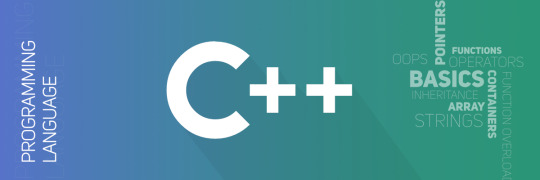
C++ is an all-purpose object-oriented programming (OOP) language. C and C+ were its predecessors. The main highlight of C++ is a collection of predefined classes, which are data types that can be instantiated multiple times
Dot Net
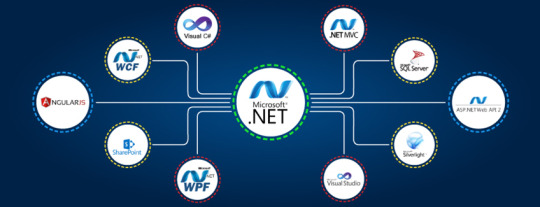
The advent of Dot Net improved development experience and relieved engineers from security operations, active memory management, and other low-level efforts that C/C++ developers had to bother with.
.NET is a language-independent framework that provides programming guidelines to develop a wide range of applications for web, mobile, and Windows-based applications. The .NET framework can work with several programming languages such as C#, VB.NET, C++, and F#.
Javascript
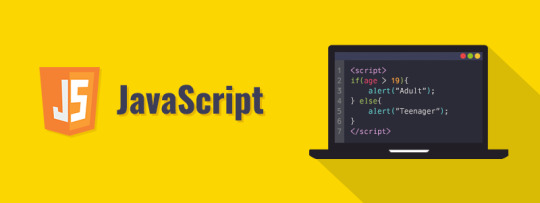
JavaScript (JS) is a lightweight, interpreted, or just-in-time compiled programming language with first-class functions. While it is most well-known as the scripting language for Web pages, many non-browser environments also use it, such as Node.js, Apache CouchDB and Adobe Acrobat.
AngularJS
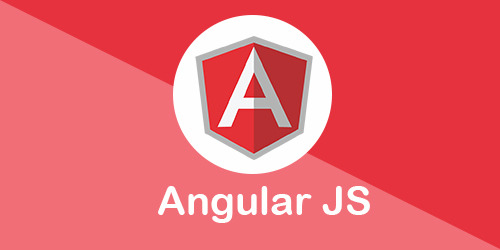
AngularJS was developed to tackle the growing needs of developers. It is a structural framework for dynamic web apps and uses HTML as the template language. It is a JavaScript-based open-source framework used for building a front-end web application.
NodeJS

Node JS relies on Javascript and uses an event-driven, non-blocking I/O model that makes it lightweight and efficient. It remains perfect for data-intensive real-time applications running across distributed devices.
ReactJS
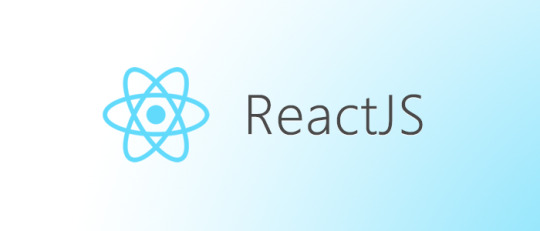
React JS is an open-source JavaScript library designed by Facebook. It is used for building user interfaces or front-end framework specifically for single-page applications. It is used for handling the view layer for web and mobile apps.
Most Demanded Programming Language
Here are the Top 7 programming languages with the most job postings on Indeed as of January 2019.
· Java – 65,986 jobs
· Python – 61,818 jobs
· Javascript – 38,018 jobs
· C++ – 36,798 jobs
· C# – 27,521 jobs
· PHP – 16,890 jobs
· PERL – 13, 727 jobs
How can I learn to code?
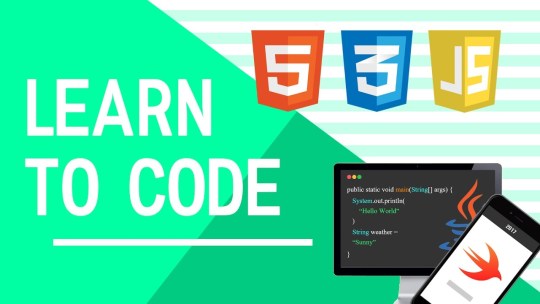
It is easy to learn coding if you can invest few hours of your day learning the basics of programming, such as language (PHP for dynamic web page, Swift or C for iOS mobile apps, and Java for Android apps), code implementation, toolset, framework, testing, and developing applications or web pages.
Online Courses
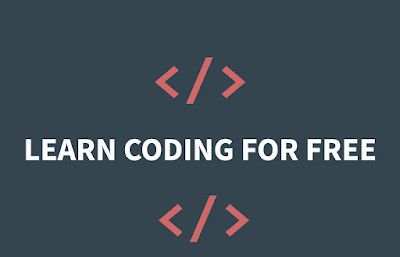
Online courses offer you a flexible schedule. You can learn the coding at the comfort of your home. Most online courses offer classes and conduct exams in return for a small fee.
The Odin Project is one of the sites offering an online course on programming for solo practitioners.
Subscription-model certification courses from Udacity or Treehouse offer an opportunity to ask a tutor.

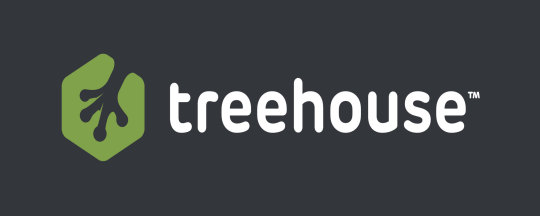
You can get free practical JavaScript course from Watch and Code, which revolves around a single project that you continually iterate.
Watching videos and tutorials, reading e-books, and practicing your own project can help you gain programming knowledge quicker than you can think.
The ability to code comes with greater benefits. You can find a high-paying job at almost any Tech company. With the rising demand for programmers, you are less likely to be returned from job interviews.
The important thing to keep in mind to keep yourself updated. With the changing face of technology comes bigger challenges such as keeping yourself updated, learning the additional language for larger outreach, and collaborating with like-minded personnel’s. The GitHub offers a large resource of knowledge, codes, and an opportunity to collaborate with programmers around the world.
Searchable Design llc
Searchable Design in an it company located in Des Monies, Urbandale. Searchable Design is an enthusiastic group of IT professionals in Des Moines working to provide endless web,mobile solutions in des moines for businesses and individuals alike. From a niche website to varieties of online business tool, we design, manage and upgrade everything according to your need and requirement.
#importanceofcoding#differenttypesofprogramminglanguage#searchabledesign#itsolutionindesmoines#itcompanyindesmoines#itcompanyinurbandale#onlinecourseforprogramminglanguage#mostdemandedprogramminglanguage#webdevelopmentindesmoines
0 notes
Link

Apache CouchDB is an open-source database software which is developed by an Apache Software Foundation and first released in 2005 under the Apache license of version 2.0.
0 notes
Link
CouchDB - Mastering Database Design with CouchDB ##Edx ##realdiscount #CouchDB #Database #Design #Mastering CouchDB - Mastering Database Design with CouchDB Apache CouchDB is open source database software and these tutorials are for you to gain a quick overview of the same. This training is to learn about CouchDB, the processes to set it up, and the ways to interact with CouchDB server using cURL and Futon. We will learn how to create, update and delete databases and documents. The course will have the following pattern of instructions: Introduction Difference between SQL and nosql databases Environmental Setup Curl and Futon Creating your first Couch DB database Introduction to Json HTTP API Creating a document Updating a document Deleting a document Deleting a database Attaching files Introduction to couchDb Views Mechanics of CouchDb deployment 👉 Activate Udemy Coupon 👈 Free Tutorials Udemy Review Real Discount Udemy Free Courses Udemy Coupon Udemy Francais Coupon Udemy gratuit Coursera and Edx ELearningFree Course Free Online Training Udemy Udemy Free Coupons Udemy Free Discount Coupons Udemy Online Course Udemy Online Training 100% FREE Udemy Discount Coupons https://www.couponudemy.com/blog/couchdb-mastering-database-design-with-couchdb-2/
0 notes
Text
The Good and the Bad of JavaScript Full Stack Development
What is Javascript? One of the most popular programming languages and a dominant web development technology, JavaScript has been around for over 20 years now. Being initially bound to front end engineering, the language has seen even more growth in popularity after an ability to use it on the server side was represented. Ever since there has been a heated discussion going on about the use of full stack JavaScript.
Being a full stack development company and having 7+ years of JavaScript engineering experience, we were able to form our own opinion on the topic, which we would like to share with you. In this article, we will discuss the pros and cons of JavaScript full stack development and its best areas of application. But first, let’s talk about the concept of being a full stack developer.
What Is Full Stack Development?
It is almost impossible to create a full-fledged software product using only one technology. This usually involves complete tech stacks – Standard combinations of tools and programming languages. As all software products consist of the client side and a server, there are usually two separate stacks that cover each of the layers. However, there are approaches that can be used to build web or mobile application from A to Z. These are called full stack development.
Accordingly, a generalist that has broad skills across all aspects of product engineering is usually called a full stack developer.
Full Stack Developer
Being considered unicorns due to their rare expertise and versatility, they are in high demand for large companies and startups alike, from Facebook and eBay to Munchery, Betterment or Tinder.
As an idea of a person equally proficient at HTML/CSS, Python, and SQL has become more of a myth, the approach towards acquiring new skills and learning quickly has led to the appearance of specialists strong in one particular stack. Let’s see what the most popular stacks are and how they’re used.
LAMP Stack: Linux, Apache, MySQL, PHP
LAMP has been a popular choice for web development since 2000 due to its open-source nature and Linux’s friendliness towards developers. It includes Linux operating system, Apache web server, MySQL database, and PHP application software. Recently, LAMP stack has been slowly transforming into LEMP, with more and more developers replacing Apache web server with NGINX. Although Apache is used by the lion’s share of existing websites, it’s taking losses while NGINX is rapidly growing.
LAMP/LEMP stack is easily modified, traditional, secure, and free – a great choice for enterprise apps and prototypes that often require a high level of customization along with cost-effectiveness. With the full access to the source code and an ability to mix and match components of the stack, developers gain great flexibility and can make custom choices depending on each specific application.
The biggest argument against the LAMP stack comes from it’s fragmentary nature. The mastery of LAMP requires learning a few unrelated languages – the problem solved by the MEAN stack that’s running fully on JavaScript. We’ll talk about it further in the article.
MEAN Stack: MongoDB, Express, AngularJS, and Node.js
As a versatile stack running on a uniform language, MEAN is a preferred technology for startups, often called an evolved version of LAMP. Among the companies embracing the MEAN approach are Uber, Google, Netflix, and PayPal. We’ll talk more about the benefits and drawbacks of this stack and JavaScript development on the whole in the main section of the article.
Ruby on Rails: Ruby, SQLite, PHP
Often called just Rails, this web development framework uses Ruby as a programming language and its own default database called SQLite with various compatible web servers such as Apache, NGINX, Passenger, or WEBrick. According to GitHub’s year in review, Ruby is 4th most popular language of 2017, and Rails augments it and makes it possible to write a website on Ruby. Rails owes a part of its popularity to Ruby – the language’s clean syntax helps you build complex websites quickly and happily (at least, that’s how the Ruby’s creator would like developers to feel).
Rails is especially popular among startups due to various reasons. The abundance of shareable software libraries called RubyGem allows businesses to develop rapidly using free and existing components. Also, simplicity that lies in the foundation of Rails’ philosophy is expressed in such principles as Convention Over Configuration and Don’t Repeat Yourself that minimize your code and help you make less decisions.
Django Stack: Python, Django, MySQL
Instagram, Mozilla, Bitbucket, and the NASA’s website are all powered by this Python-driven environment. With the attention towards such technologies as machine learning and big data that majorly rely on Python, the language popularity is steadily growing, according to TIOBE and StackOverflow. Django follows the “batteries included” approach meaning that all of its functionality already comes with the framework and doesn’t require additional libraries. Thanks to this, Django relieves you from making many choices and makes it possible to create news, blogs, or eCommerce stores with its abundance of default tools. With its broad range of tutorials, a supportive community, and a clean and rapid development experience, Django is perfect for starting Python programmers. If you want something different from what this stack can offer, look into smaller packages such as Flask and Pyramid, each with its own level of flexibility and best use cases.
You may have noticed that the aforementioned stacks are not offering any default front-end solutions. The reason for that is that the frontend part of the system is much more versatile. Developers can use a variety of frameworks for front-end regardless of the chosen stack, each created for their own use cases in mind. You can consult our article on ReactJS and React Native and Angular for the deeper view of their pros and cons, and compare four more full stack JavaScript frameworks to make the best choice for your project. Aside from that, you can check out such tools as Bootstrap or Semantic-UI, created with a bunch of premade elements for quickly building responsive products.
Aside from choosing between the existing software packages, you can compose your own stack by looking at the technology used by popular websites and applications. If you want to build a new Yelp or Reddit, check out the portals like StackShare and TechStacks for the lists of all main technologies applied.
While to operate with the LAMP package a full stack engineer needs to know a few languages, it’s not always the case with full stack development. JavaScript alone can be used across all software layers. Therefore, a person who applies the language for both front end and back end programming is called JavaScript full stack developer. Taking into account the undisputed popularity of the programming language, such engineers are probably the most sought-after specialists in web development.
What Is Full Stack Javascript: One JavaScript, Different Technology Stacks
When talking about full stack JavaScript the first thing that comes to mind is the MEAN stack. It is a technology bundle that includes MongoDB, Express, AngularJS, and Node.js.
However, with the rapid growth of this approach, more alternative options for full stack JavaScript development are added. While server side JavaScript programming with Node.js and Express web framework is the most common technology choice, other Node.js-based tools, such as Meteor, Sails.js, Koa, restify, or Keystone.js, might be used as well.
The choice of possible frameworks for the front end JavaScript is even greater. Aside from traditional AngularJS or AngularJS 2.0 frameworks, numerous libraries, such as React, Vue.js, Knockout.js, or Backbone.js, are typically used, depending on the project specifics.
As for the database, almost any MongoDB alternative can be used: MySQL, PostgreSQL, Apache CouchDB or Apache Cassandra.
Full Stack JavaScript
What is Full Stack JavaScript
The Pros of Full Stack JavaScript Development
The fact that companies like Groupon, Airbnb, Netflix, Medium and PayPal adopted the full stack JavaScript approach to build some of their products speaks for itself. However, small startups seem to enjoy using it as well. This is mostly due to the number of benefits full stack programming offers.
⊕ Common language, better team efficiency with less resources
Having all parts of your web application written in JavaScript allows for better understanding of the source code within the team. Therefore, there is no such thing as a gap between front and back end engineering that occurs when two teams are working separately using different technologies. Moreover, you can now work with only one team instead of two, for back and front end, which should significantly reduce the cost and effort of finding and retaining the right talent. Such a cross-functional team is a great asset when following Agile methodologies.
⊕ Extensive code reuse
With full stack JavaScript, you save time through code reuse and sharing. Following the “don’t repeat yourself” (DRY) principle, you might be able to reduce the effort by reusing the parts of the code (or sharing libraries, templates, and models) on both back and front end that are very close in terms of logic and implementation. In other words, you don’t need to think about the Javascript utility equivalents in Python or Ruby, you just use the same utility on the server and in the browser. Reducing the number of lines of code by up to 40 percent is also a valuable capability when refactoring and maintaining the source code.
⊕ High performance and speed
Node.js uses event-driven, non-blocking IO model that makes it lightweight and fast as compared to other commonly used back end technologies. To prove this, PayPal published a comprehensive report on the results they have seen in the process of migrating from Java to full stack JavaScript. The company was able to make the development almost 2 times faster while reducing the engineering personnel involved. Moreover, they have seen a dramatic improvement in performance, doubling the number of requests completed per second and decreasing the average response time by 35 percent for the same page. This means that the pages are served 200ms faster, which is definitely a noteworthy result.
To learn more about Node.js, consider checking our explainer video.
Node.js advantages and disadvantages explained
⊕ Huge talent pool
According to the Stack Overflow annual survey, JavaScript is the most-used programming language, used by 62.5 percent of the respondents, which makes almost 23,000 developers on the website alone. Taking into account the fact that the survey covered only about 0.4 percent out of more than 19 million developers worldwide, the total number of JavaScript engineers might be well over 10 million. Therefore, finding a skilled engineer is relatively easy.
web technologies
⊕ Extensive knowledge base
Backed by giants like Facebook and Google, JavaScript has a powerful and fast-growing community. Based on the Stack Overflow survey from 2016 quoted above, the language tops the list of the most popular technologies on the website with 62,588 votes. The website currently lists 1,543,025 questions tagged “JavaScript”, which indicates the high activity of the developer community and the huge amount of valuable information that can be found there.
⊕ Free, open source toolset
Most of the full stack JavaScript development tools are free or open source projects. This means you don’t need to bear additional expenses for costly licenses or subscriptions. The tools that are open sourced are updated regularly and evolving fast due to the active community contributions. Instead of relying on a fixed set of technologies, you may use any of more than 475,000 tools (which have doubled since last year), hosted by the npm, the largest JavaScript modules registry in the world.
The Cons of Full Stack JavaScript Approach
Yet, no technology is perfect. Despite all the benefits the full stack approach offers, there is always some drawbacks to be aware of.
Θ Insufficiency with computation-heavy back end
When it comes to heavy computation and data processing on the server side, Node.js is not the best option. There are lots of far better technologies to handle projects like machine learning, algorithms, or heavy mathematical calculations. Having a single CPU core and only one thread, that processes one request at a time, it might be easily blocked by a single computational intensive task. While the thread is busy processing the numbers, your application won’t be able to work with other requests, which might result in serious delays. Yet, there are numerous ways to overcome this limitation. By simply creating child processes or breaking complex tasks into smaller independent microservices, that use more suitable technologies and communicate with your back end, you can handle complex computational tasks in Node.js.
microservices architecture
Θ Relatively young technologies
When compared with PHP or Java, server side JavaScript has been around for a shorter period of time. This results in a smaller knowledge base and limited integration capabilities. As an example, some developers cite the immaturity of the connections between Node.js and relational database tools, such as MySQL, Microsoft SQL Server, and PostgreSQL.
Θ Jack of all trades, master of none?
It is a common belief that a developer can truly master only one area of knowledge. With every other skill gained the quality of his/her expertise will decline. While syntax and grammar of JavaScript are mostly the same on client and server side, there are still many details to consider. Aside from being proficient in front end development, full stack JavaScript developers need to have an expertise in back end programming, such as HTTP protocol, asynchronous I/O, data storage fundamentals, cookies, etc. That is why some say that there are really no full stack engineers: Every one of them is either front or back end oriented. However, we have all the reasons to disagree, based on our own experience and strong JavaScript skills.
Θ Drawbacks of every separate tool in the stack combined
As every technology stack, MEAN combines the weak sides of all 4 its elements. Most of them are minor technical limitations, which appear under certain circumstance. However, in order to use the stack, it’s important to realize possible bottlenecks of every tool and adjust your development strategy accordingly.
The Use Cases
What is Javascript used for? Despite the fact that there are some drawbacks in going full stack with JavaScript, the approach already has a strong following and is evolving quickly. The number of active repositories on GitHub, is a compelling argument in favor of the language.[Source]-https://www.altexsoft.com/blog/engineering/the-good-and-the-bad-of-javascript-full-stack-development/
62 Hours Mean Stack Training includes MongoDB, JavaScript, A62 angularJS Training, MongoDB, Node JS and live Project Development. Demo Mean Stack Training available.
0 notes
Text
How to install CouchDB (& GUI manager) on CentOS & Ubuntu
How to install CouchDB (& GUI manager) on CentOS & Ubuntu
Apache CouchDB is an open source, document oriented NoSQL database server. CouchDB uses JSON for data storage, JavaScript for MapReduce indexes, and regular HTTP for its API & can be easily managed from a web browser via HTTP or API.
In this tutorial, we will learn to install CouchDB on CentOS as well as on Ubuntu machines. We will start by discussing the pre-requisites to install CouchDB.
(Recom��
View On WordPress
0 notes
Text
The Ultimate Guide to PouchDB: Tutorial for Efficient Database Management
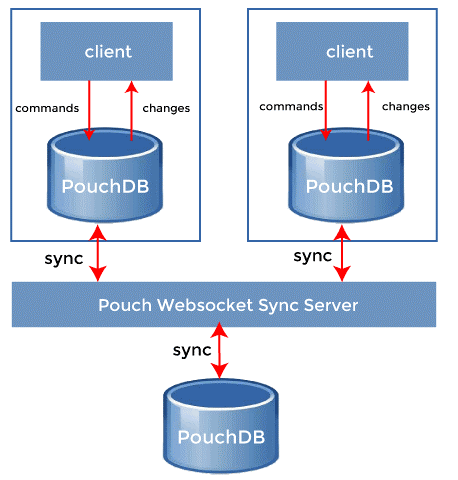
In the realm of modern app development, managing data efficiently while ensuring seamless functionality is paramount. PouchDB stands as a versatile solution, offering an innovative approach to database management, especially in offline scenarios. This PouchDB tutorial aims to illuminate its capabilities and guide you through its implementation.
PouchDB, built on the foundations of Apache CouchDB, facilitates the storage of data locally, enabling offline access and synchronization when connected. Its adaptability to various platforms, ease of use, and robustness make it a go-to choice for developers seeking reliability and flexibility.
This tutorial delves into PouchDB's core functionalities, covering essential aspects like database creation, data synchronization, querying, and handling conflicts. You'll explore the intricacies of its API, understanding how to integrate and utilize PouchDB within your applications seamlessly.
By following this tutorial, you'll acquire the skills needed to leverage PouchDB's potential, empowering you to craft resilient, offline-first applications. Whether you're a beginner or an experienced developer, this comprehensive guide ensures a solid grasp of PouchDB's capabilities.
Unlock the possibilities with PouchDB today! For a detailed walkthrough and deeper insights, visit PouchDB Tutorial at Tutorial and Example.
Remember, the future of efficient data management lies within your grasp, powered by PouchDB's innovation and your newfound expertise.
0 notes
Link
Learn CouchDB- A Beginner to Advanced Guide ##UdemyFrancais ##UdemyFreeDiscountCoupons #Advanced #BEGINNER #CouchDB #Guide #Learn Learn CouchDB- A Beginner to Advanced Guide "Learn CouchDB- A Beginner to Advanced Guide" provides basic and advanced concepts of CouchDB. This course is designed for beginners and professionals both. CouchDB is an open source NoSQL database developed by Apache software foundation. It is written in Erlang programming language. "Learn CouchDB- A Beginner to Advanced Guide" course includes all topics of CouchDB such as couchdb fauxton, http api, installation, couchdb vs mongodb, create database, create document, features, introduction, update document, why couchdb Mango query, Postman API, Connectivity with JAVA, PYTHON, PHP etc. Unlike a relational database, a CouchDB database does not store data and relationships in tables. Instead, each database is a collection of independent documents. Each document maintains its own data and self-contained schema. So, Start this course today with Techno Crats. Happy Learning!! Who this course is for: Professionals aspiring to make a career in Big Data and NoSQL Databases 👉 Activate Udemy Coupon 👈 Free Tutorials Udemy Review Real Discount Udemy Free Courses Udemy Coupon Udemy Francais Coupon Udemy gratuit Coursera and Edx ELearningFree Course Free Online Training Udemy Udemy Free Coupons Udemy Free Discount Coupons Udemy Online Course Udemy Online Training 100% FREE Udemy Discount Coupons https://www.couponudemy.com/blog/learn-couchdb-a-beginner-to-advanced-guide/
0 notes
Link
JavaScript + ES6 + ES7 + ES8 + ES9 -> The Complete Guide ##udemycoupon ##UdemyDiscount #Complete #ES6 #ES7 #ES8 #ES9 #Guide #JavaScript JavaScript + ES6 + ES7 + ES8 + ES9 -> The Complete Guide Welcome to my new course, 'JavaScript + ES6 + ES7 + ES8 + ES9 -> The Complete Guide'. This course starts from scratch, you neither need to know any pre-requisite programming knowledge nor any language expertise. From the environment Setup to Development, this course covers almost each and every concept required to become an expert JavaScript developer. Having a deep-dive of the concepts in this course, you'll learn all about: JavaScript: Development Environment Setup Fundamentals Operators Control Flow Arrays Functions Objects Prototypes Patterns To Create Objects Error Handling Miscellaneous Objects Debugging in Chrome Shopping Cart Project: Putting All Together ES6: Features with their Syntax Modules Class Symbols Iterators & Generators Promises Maps & Sets Extensions of Built-in Objects Reflect API Proxy API ES7: New Features ES8: New Features ES9: New Features World Weather Project: Putting All Together Course Roundup and many more... This course will assist: In becoming an proficient 'JavaScript Developer' and Inclining towards the learning/ understanding of any client/ server side programming language. Why JavaScript? JavaScript (JS) is a lightweight, interpreted or JIT compiled programming language with first-class functions. Most well-known as the scripting language for Web pages, many non-browser environments also use it, such as Node.js and Apache CouchDB. JS is a prototype-based, multi-paradigm, dynamic scripting language, supporting object-oriented, imperative, and declarative (e.g. functional programming) styles. The standard for JavaScript is ECMAScript. As of 2012, all modern browsers fully support ECMAScript 5.1. Older browsers support at least ECMAScript 3. On June 17, 2015, ECMA International published the 6th major version of ECMAScript, ECMAScript 2015. Since then, ECMAScript standards are on yearly release cycles. This course covers up to the latest version of JavaScript, which is currently ECMAScript 2019. Why we should learn JavaScript & the reasons are: Open Source Language: Freely Available. Much more than Scripting programming language. Scalability and Performance Features. Evolving steadily & ES6 represents the BEST !!! Much JavaScript-related innovation in the Market. Base of most of the frameworks like Angular. Supported by a broad coalition of companies. Who this course is for: Be a JS Ninja by understanding the most popular programming language in the world viz. JavaScript. Newcomer as well as experienced having the experience with JavaScript (ES5/ ES6) and know the basics of the language. Understanding the new Features and Additions, brought by ES6 (including ES5) to JavaScript. Understand the basics to move head with the popular libraries/frameworks like jQuery, React, Angular or NodeJS. Understand how JavaScript actually works internally. 👉 Activate Udemy Coupon 👈 Free Tutorials Udemy Review Real Discount Udemy Free Courses Udemy Coupon Udemy Francais Coupon Udemy gratuit Coursera and Edx ELearningFree Course Free Online Training Udemy Udemy Free Coupons Udemy Free Discount Coupons Udemy Online Course Udemy Online Training 100% FREE Udemy Discount Coupons https://www.couponudemy.com/blog/javascript-es6-es7-es8-es9-the-complete-guide/
0 notes
Text
The Good and the Bad of JavaScript Full Stack Development
What is Javascript? One of the most popular programming languages and a dominant web development technology, JavaScript has been around for over 20 years now. Being initially bound to front end engineering, the language has seen even more growth in popularity after an ability to use it on the server side was represented. Ever since there has been a heated discussion going on about the use of full stack JavaScript.
Being a full stack development company and having 7+ years of JavaScript engineering experience, we were able to form our own opinion on the topic, which we would like to share with you. In this article, we will discuss the pros and cons of JavaScript full stack development and its best areas of application. But first, let’s talk about the concept of being a full stack developer.
What Is Full Stack Development?
It is almost impossible to create a full-fledged software product using only one technology. This usually involves complete tech stacks – Standard combinations of tools and programming languages. As all software products consist of the client side and a server, there are usually two separate stacks that cover each of the layers. However, there are approaches that can be used to build web or mobile application from A to Z. These are called full stack development.
Accordingly, a generalist that has broad skills across all aspects of product engineering is usually called a full stack developer.
Full Stack Developer
Being considered unicorns due to their rare expertise and versatility, they are in high demand for large companies and startups alike, from Facebook and eBay to Munchery, Betterment or Tinder.
As an idea of a person equally proficient at HTML/CSS, Python, and SQL has become more of a myth, the approach towards acquiring new skills and learning quickly has led to the appearance of specialists strong in one particular stack. Let’s see what the most popular stacks are and how they’re used.
LAMP Stack: Linux, Apache, MySQL, PHP
LAMP has been a popular choice for web development since 2000 due to its open-source nature and Linux’s friendliness towards developers. It includes Linux operating system, Apache web server, MySQL database, and PHP application software. Recently, LAMP stack has been slowly transforming into LEMP, with more and more developers replacing Apache web server with NGINX. Although Apache is used by the lion’s share of existing websites, it’s taking losses while NGINX is rapidly growing.
LAMP/LEMP stack is easily modified, traditional, secure, and free – a great choice for enterprise apps and prototypes that often require a high level of customization along with cost-effectiveness. With the full access to the source code and an ability to mix and match components of the stack, developers gain great flexibility and can make custom choices depending on each specific application.
The biggest argument against the LAMP stack comes from it’s fragmentary nature. The mastery of LAMP requires learning a few unrelated languages – the problem solved by the MEAN stack that’s running fully on JavaScript. We’ll talk about it further in the article.
MEAN Stack: MongoDB, Express, AngularJS, and Node.js
As a versatile stack running on a uniform language, MEAN is a preferred technology for startups, often called an evolved version of LAMP. Among the companies embracing the MEAN approach are Uber, Google, Netflix, and PayPal. We’ll talk more about the benefits and drawbacks of this stack and JavaScript development on the whole in the main section of the article.
Ruby on Rails: Ruby, SQLite, PHP
Often called just Rails, this web development framework uses Ruby as a programming language and its own default database called SQLite with various compatible web servers such as Apache, NGINX, Passenger, or WEBrick. According to GitHub’s year in review, Ruby is 4th most popular language of 2017, and Rails augments it and makes it possible to write a website on Ruby. Rails owes a part of its popularity to Ruby – the language’s clean syntax helps you build complex websites quickly and happily (at least, that’s how the Ruby’s creator would like developers to feel).
Rails is especially popular among startups due to various reasons. The abundance of shareable software libraries called RubyGem allows businesses to develop rapidly using free and existing components. Also, simplicity that lies in the foundation of Rails’ philosophy is expressed in such principles as Convention Over Configuration and Don’t Repeat Yourself that minimize your code and help you make less decisions.
Django Stack: Python, Django, MySQL
Instagram, Mozilla, Bitbucket, and the NASA’s website are all powered by this Python-driven environment. With the attention towards such technologies as machine learning and big data that majorly rely on Python, the language popularity is steadily growing, according to TIOBE and StackOverflow. Django follows the “batteries included” approach meaning that all of its functionality already comes with the framework and doesn’t require additional libraries. Thanks to this, Django relieves you from making many choices and makes it possible to create news, blogs, or eCommerce stores with its abundance of default tools. With its broad range of tutorials, a supportive community, and a clean and rapid development experience, Django is perfect for starting Python programmers. If you want something different from what this stack can offer, look into smaller packages such as Flask and Pyramid, each with its own level of flexibility and best use cases.
You may have noticed that the aforementioned stacks are not offering any default front-end solutions. The reason for that is that the frontend part of the system is much more versatile. Developers can use a variety of frameworks for front-end regardless of the chosen stack, each created for their own use cases in mind. You can consult our article on ReactJS and React Native and Angular for the deeper view of their pros and cons, and compare four more full stack JavaScript frameworks to make the best choice for your project. Aside from that, you can check out such tools as Bootstrap or Semantic-UI, created with a bunch of premade elements for quickly building responsive products.
Aside from choosing between the existing software packages, you can compose your own stack by looking at the technology used by popular websites and applications. If you want to build a new Yelp or Reddit, check out the portals like StackShare and TechStacks for the lists of all main technologies applied.
While to operate with the LAMP package a full stack engineer needs to know a few languages, it’s not always the case with full stack development. JavaScript alone can be used across all software layers. Therefore, a person who applies the language for both front end and back end programming is called JavaScript full stack developer. Taking into account the undisputed popularity of the programming language, such engineers are probably the most sought-after specialists in web development.
What Is Full Stack Javascript: One JavaScript, Different Technology Stacks
When talking about full stack JavaScript the first thing that comes to mind is the MEAN stack. It is a technology bundle that includes MongoDB, Express, AngularJS, and Node.js.
However, with the rapid growth of this approach, more alternative options for full stack JavaScript development are added. While server side JavaScript programming with Node.js and Express web framework is the most common technology choice, other Node.js-based tools, such as Meteor, Sails.js, Koa, restify, or Keystone.js, might be used as well.
The choice of possible frameworks for the front end JavaScript is even greater. Aside from traditional AngularJS or AngularJS 2.0 frameworks, numerous libraries, such as React, Vue.js, Knockout.js, or Backbone.js, are typically used, depending on the project specifics.
As for the database, almost any MongoDB alternative can be used: MySQL, PostgreSQL, Apache CouchDB or Apache Cassandra.
Full Stack JavaScript
What is Full Stack JavaScript
The Pros of Full Stack JavaScript Development
The fact that companies like Groupon, Airbnb, Netflix, Medium and PayPal adopted the full stack JavaScript approach to build some of their products speaks for itself. However, small startups seem to enjoy using it as well. This is mostly due to the number of benefits full stack programming offers.
⊕ Common language, better team efficiency with less resources
Having all parts of your web application written in JavaScript allows for better understanding of the source code within the team. Therefore, there is no such thing as a gap between front and back end engineering that occurs when two teams are working separately using different technologies. Moreover, you can now work with only one team instead of two, for back and front end, which should significantly reduce the cost and effort of finding and retaining the right talent. Such a cross-functional team is a great asset when following Agile methodologies.
⊕ Extensive code reuse
With full stack JavaScript, you save time through code reuse and sharing. Following the “don’t repeat yourself” (DRY) principle, you might be able to reduce the effort by reusing the parts of the code (or sharing libraries, templates, and models) on both back and front end that are very close in terms of logic and implementation. In other words, you don’t need to think about the Javascript utility equivalents in Python or Ruby, you just use the same utility on the server and in the browser. Reducing the number of lines of code by up to 40 percent is also a valuable capability when refactoring and maintaining the source code.
⊕ High performance and speed
Node.js uses event-driven, non-blocking IO model that makes it lightweight and fast as compared to other commonly used back end technologies. To prove this, PayPal published a comprehensive report on the results they have seen in the process of migrating from Java to full stack JavaScript. The company was able to make the development almost 2 times faster while reducing the engineering personnel involved. Moreover, they have seen a dramatic improvement in performance, doubling the number of requests completed per second and decreasing the average response time by 35 percent for the same page. This means that the pages are served 200ms faster, which is definitely a noteworthy result.
To learn more about Node.js, consider checking our explainer video.
Node.js advantages and disadvantages explained
⊕ Huge talent pool
According to the Stack Overflow annual survey, JavaScript is the most-used programming language, used by 62.5 percent of the respondents, which makes almost 23,000 developers on the website alone. Taking into account the fact that the survey covered only about 0.4 percent out of more than 19 million developers worldwide, the total number of JavaScript engineers might be well over 10 million. Therefore, finding a skilled engineer is relatively easy.
web technologies
⊕ Extensive knowledge base
Backed by giants like Facebook and Google, JavaScript has a powerful and fast-growing community. Based on the Stack Overflow survey from 2016 quoted above, the language tops the list of the most popular technologies on the website with 62,588 votes. The website currently lists 1,543,025 questions tagged “JavaScript”, which indicates the high activity of the developer community and the huge amount of valuable information that can be found there.
⊕ Free, open source toolset
Most of the full stack JavaScript development tools are free or open source projects. This means you don’t need to bear additional expenses for costly licenses or subscriptions. The tools that are open sourced are updated regularly and evolving fast due to the active community contributions. Instead of relying on a fixed set of technologies, you may use any of more than 475,000 tools (which have doubled since last year), hosted by the npm, the largest JavaScript modules registry in the world.
The Cons of Full Stack JavaScript Approach
Yet, no technology is perfect. Despite all the benefits the full stack approach offers, there is always some drawbacks to be aware of.
Θ Insufficiency with computation-heavy back end
When it comes to heavy computation and data processing on the server side, Node.js is not the best option. There are lots of far better technologies to handle projects like machine learning, algorithms, or heavy mathematical calculations. Having a single CPU core and only one thread, that processes one request at a time, it might be easily blocked by a single computational intensive task. While the thread is busy processing the numbers, your application won’t be able to work with other requests, which might result in serious delays. Yet, there are numerous ways to overcome this limitation. By simply creating child processes or breaking complex tasks into smaller independent microservices, that use more suitable technologies and communicate with your back end, you can handle complex computational tasks in Node.js.
microservices architecture
Θ Relatively young technologies
When compared with PHP or Java, server side JavaScript has been around for a shorter period of time. This results in a smaller knowledge base and limited integration capabilities. As an example, some developers cite the immaturity of the connections between Node.js and relational database tools, such as MySQL, Microsoft SQL Server, and PostgreSQL.
Θ Jack of all trades, master of none?
It is a common belief that a developer can truly master only one area of knowledge. With every other skill gained the quality of his/her expertise will decline. While syntax and grammar of JavaScript are mostly the same on client and server side, there are still many details to consider. Aside from being proficient in front end development, full stack JavaScript developers need to have an expertise in back end programming, such as HTTP protocol, asynchronous I/O, data storage fundamentals, cookies, etc. That is why some say that there are really no full stack engineers: Every one of them is either front or back end oriented. However, we have all the reasons to disagree, based on our own experience and strong JavaScript skills.
Θ Drawbacks of every separate tool in the stack combined
As every technology stack, MEAN combines the weak sides of all 4 its elements. Most of them are minor technical limitations, which appear under certain circumstance. However, in order to use the stack, it’s important to realize possible bottlenecks of every tool and adjust your development strategy accordingly.
The Use Cases
What is Javascript used for? Despite the fact that there are some drawbacks in going full stack with JavaScript, the approach already has a strong following and is evolving quickly. The number of active repositories on GitHub, is a compelling argument in favor of the language.[Source]-https://www.altexsoft.com/blog/engineering/the-good-and-the-bad-of-javascript-full-stack-development/
62 Hours Mean Stack Training includes MongoDB, JavaScript, A62 angularJS Training, MongoDB, Node JS and live Project Development. Demo Mean Stack Training available.
0 notes